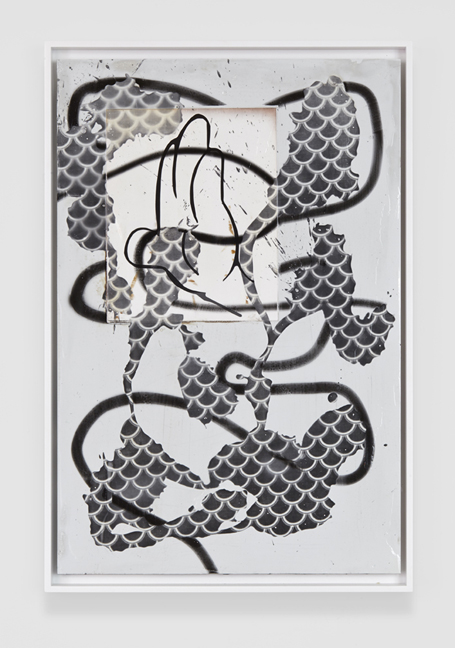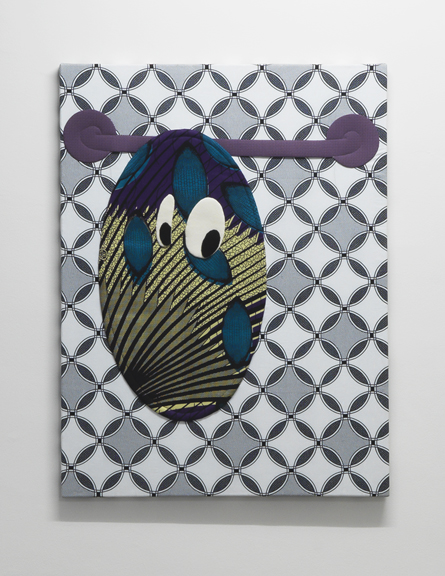Lucas Knipscher
Wednesday, 6 January 2016
Work from his oeuvre.
“…Second Mouse’ (2012) is a collection of paintings made using photographic emulsion slathered onto sewn fabric, haphazardly folded and slung over stretchers like poorly stapled, casual paintings. Exchanging canvas for two swatches of fabric sewn down the middle, these art works channel the cotton and wool wall pieces of Von Bonin. However, rather than producing a quilted effect, Knipscher complicated the ground by pairing exotic swatches, such as Ikat-dyed material, with the traditional American Gingham – a loud colourful pattern acting as a foil to the minimal grid. These styles made for an unlikely and jarring ground for the image cast atop, a photograph of a cartoon mouse created by a rudimentary image transfer technique. Where a smear of drippy ground expressively stained the fabric, a faint outline of Jerry Mouse (Tom’s under-sung counterpart, Mickey’s lesser rival and Knipscher’s avatar) has been printed.
All the trappings of painting supported this photographic process; the artist tugged at the division between mediums. It’s a conceit that has been explored by the artist’s peers, for instance in Nikolas Gambaroff’s newsprint paintings or Das Institut’s analogue reproduction of digital imagery. Knipscher arrives with the equivocal attitude of a trigger-happy photographer, one who knowingly must contend with the burden of the image – the ease with which it is recast, marketed and used to elicit yet never truly satisfy a desire – not unlike the way in which modes of artistic production are imitated and reframed.
In a climate in which borrowing pre-existing form and content is accepted, applauded and even encouraged for its market success – these works are complicated by their deferral of photographic agency and authorial presence. The dialectic of appropriation and homage is a strategy used to deflect and accommodate Wilhelm Flusser’s theories of a larger photographic apparatus. ‘Second Mouse’ starts a theoretical tug of war, animating a rearguard, conservative image-making process, implementing materials both trendy and traditional in order to serve a purpose, while pandering to the American predilection for the underdog, the second mouse. Knipscher’s idiosyncratic and most elegant sleight of hand may be the very unstable nature of the images that he pilfers, pimps and peddles, as these chemically un-fixed works, darken, change and even disappear over time.” – Piper Marshall





